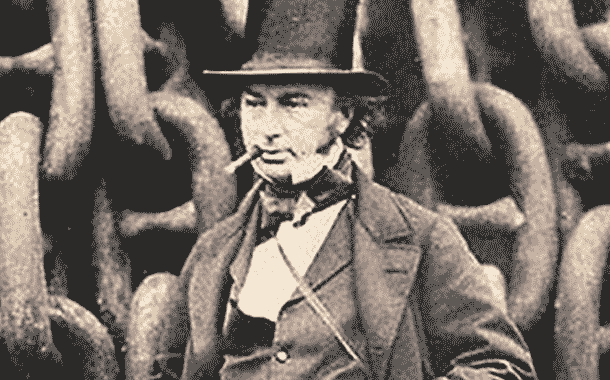<![CDATA[Archaeologists have uncovered the remains of a set of structures built by the world famous engineer Isambard Kingdom Brunel, close to Paddington Rail Station in London, UK. Brunel built these structures for his Great Western Railway. The structures were excavated by Crossrail as part of the largest archaeological programme in the UK. The Crossrail archaeology programme is one of the most celebrated archaeology programmes in the country. As part of the creation of a new railway network, archaeologists are exploring sites that are going to be affected by the construction works. The programme has already uncovered more than ten thousand items spanning over 55 million years of London's history. These findings were made in forty construction sites all over the city. Some of the most notable findings of the project include plague pits, Roman remains, a Tudor manor house and the Bedlam hospital burial grounds. The Great Western Railway remains were uncovered at a construction site that is now known as the Paddington New Yard. The site lies to the west of Westbourne Park Tube Station and is scheduled to become home to Crossrail tracks, a cement factory, an elevated bus deck and turn-back sidings by the year 2018. Some of the main findings include the foundations of a 200 meter engine shed, train turntables and a workshop. All of the structures are believed to have been used for the famous broad-gauge railway designed by Brunel. The broad-gauge setup was used to run the first steam trains in the area in 1838. The archaeology team is currently in the process of documenting the remains with the help of laser scans, in order to create 3D models of the buildings. Many of the buildings date back to the 1850s and were levelled in 1906, in order to make space for the goods storage yard that was constructed eventually constructed on the site. It is believed that the records will help historians better understand the process of railway development that took place in the UK. They may also shed light on the early methods of Brunel, who later became popular as one of the greatest engineers in British history. According to Jay Carver, the lead archaeologist on the Crossrail project, the Great Western Railway was by far the most complete mainline railway network in the world. He believes it is essential to record parts of the original infrastructure as they are uncovered, so as to properly document the rail history of the country. 3D scans should help by offering archaeologists an inch-perfect and permanent model of Brunel's legacy. The engine shed offers a reminder of the Act of Parliament from 1846 that mandated a change to standard gauge tracks. These new sets of tracks were implemented all over the country by the 1860s, replacing Brunel's 7 feet wide broad-gauge train tracks. This was a change that Brunel initially resisted, and evidence of his continued use of the broad-gauges can be seen in the remains of the shed. The site will be used as part of the UK's most modern rail network, but its importance in the history of train travel was established over a century ago.]]>
Brunel's Railway Heritage Uncovered
